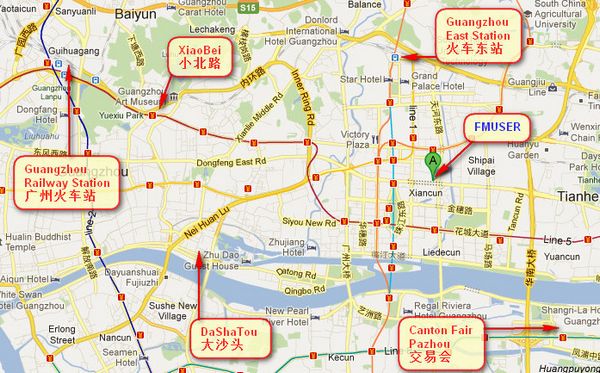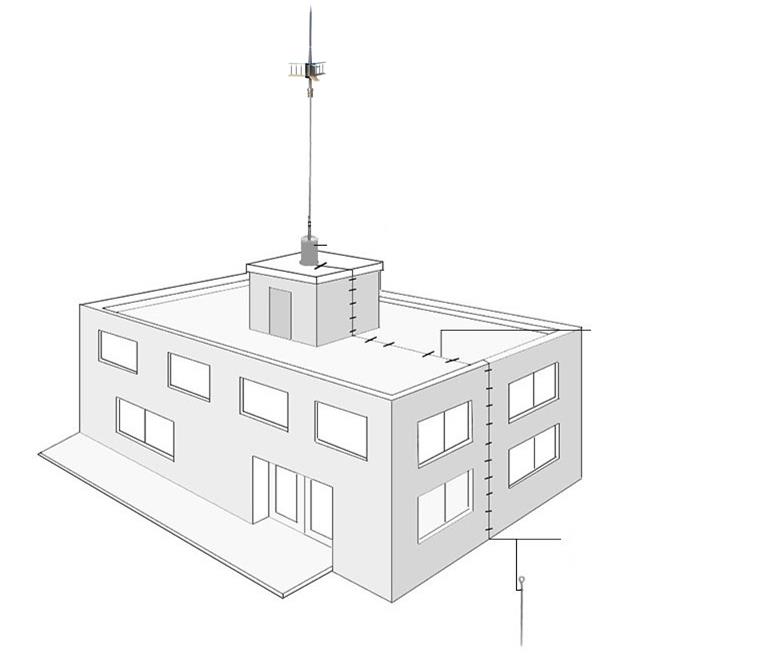Audio and video live broadcast system is a complex engineering system. To achieve very low delay live broadcast, it needs complex system engineering optimization and familiar with the various components. Here are some common tuning tips:
Coding optimization
1. Make sure codec turns on the setting of minimum delay. Codec generally has low latency optimization switch, especially for H.264. Many people may not know that H.264 decoder will cache a certain number of video frames before displaying. For video with QCIF resolution (176 × 144), it will cache 16 frames, and for 720p video, it will cache 5 frames. For the first frame read, this is a big delay. If you don't use H.264 to encode and compress your video, make sure that you don't use B frames, it will also have a greater impact on the delay, because the decoding of B frames in the video depends on the video frames before and after, which will increase the delay.
2. The encoder usually has the delay caused by code control, which is also called initialization delay or the buffer size of VBV. It is regarded as the buffer between the encoder and decoder bitstream, which can be set as small as possible or reduce the delay without affecting the video quality.
3. If the first delay is only optimized, more key frames can be inserted between the video frames, so that the client can decode the video stream as soon as possible after receiving it. However, if we need to optimize the cumulative delay in the transmission process, we should use as few key frames as possible, that is, I-frames (GOP becomes larger). In the case of ensuring the same video quality, the more I-frames, the greater the bit rate, and the more network bandwidth required for transmission, which means that the cumulative delay may be greater. This optimization effect may not be obvious in the system with second delay, but it will be obvious in the system with 100 ms or even lower delay. At the same time, try to use acc-lc codec to encode audio. Although he-acc or he-acc 2 has high coding efficiency, it takes longer to encode, and the transmission delay caused by larger volume of audio has less impact on the transmission of video stream.
4. Do not use MJPEG video compression format, at least use MPEG4 video compression format without B frame (simple profile), and even better use H.264 baseline profile (x264 also has an "tune zerolatency" optimization switch). Such a simple optimization can reduce latency because it can encode full frame rate video at a lower bit rate.
5. If ffmpeg is used, reduce the values of "- probesize" and "- analyze duration", which are used for video frame information monitoring and monitoring time. The larger the two values are, the greater the impact on the encoding delay is. In the live scene, it is not even necessary to set the analyze duration parameter for the video stream.
6. Fixed rate coding CBR can eliminate the influence of network jitter to a certain extent. If variable rate coding VBR can be used, it can save some unnecessary network bandwidth and reduce certain delay. Therefore, it is suggested that VBR be used for coding as much as possible.
Transport protocol optimization
1. Try to use RTMP instead of HLS protocol based on HTTP for transmission between server nodes, which can reduce the overall transmission delay. This is mainly aimed at the end users using HLS to play.
2. If the end user uses RTMP to play, transcoding should be carried out at the receiving node close to the streaming end, so that the transmitted video stream is smaller than the original video stream.
3. If necessary, the customized UDP protocol can be used to replace the TCP protocol, and the packet loss retransmission under the weak network link can be eliminated, which can reduce the delay. Its main disadvantage is that the transmission and distribution of customized video stream based on UDP protocol is not universal enough, and CDN manufacturers support standard transmission protocol. Another disadvantage is that there may be splash or blur caused by packet loss (lack of key frame decoding reference), which requires the protocol customization party to do a good job in packet loss control on the basis of UDP.
Transmission network optimization
1. We have introduced the real-time streaming network, which is a new type of network transmission network with self-organized nodes. It is not only suitable for the transmission optimization of domestic multi operator network, but also suitable for the needs of many overseas live broadcast.
2. Cache the current GOP in the server node, and cooperate with the player to optimize the video opening time.
3. The server records the second level frame rate and code rate when each video stream flows to each link in real time, and monitors the fluctuation of the code rate and frame rate in real time.
4. The client (push stream and play) obtains the current optimal node in quasi real time by querying the server (once every 5 seconds), and the current fault node and line are offline in quasi real time.
Streaming and playback optimization
1. The system may cache data before sending data. The tuning of this parameter also needs to find a balance.
2. The buffer control of the player also has a great influence on the first delay of the video. If only the first delay is optimized, the data can be decoded immediately when it arrives in the case of 0 buffer. But in weak network environment, in order to eliminate the impact of network jitter, it is necessary to set a certain cache, so we need to find a balance between the stability of live broadcast and the optimization of the first open delay, and adjust the optimized buffer size.
3. Player dynamic buffer strategy, which is an improved version of the above player cache control. If we just choose between 0 cache and fixed size cache to find a balance, we will eventually choose a fixed size cache, which is not fair to 100 million mobile internet terminal users. Their different network conditions determine that the fixed size cache is not completely suitable. Therefore, we can consider a "dynamic buffer strategy". When the player is turned on, we use a very small or even zero buffer strategy. The buffer size of the next time slice is determined by the time consumed to download the first video. At the same time, the current network is monitored in real time during the playback process, and the buffer size is adjusted in real time during the playback process. In this way, the first opening time can be very low, and the influence of network jitter can be eliminated as far as possible.
4. Dynamic rate playing strategy. In addition to the strategy of dynamically adjusting the buffer size, we can also use the real-time monitoring network information to dynamically adjust the bit rate in the process of playing. In the case of insufficient network bandwidth, we can reduce the bit rate for playing and reduce the delay.
The above is part of the low latency optimization techniques. In fact, when we optimize low latency, we do not only focus on "low latency", but try to achieve low latency under the condition that other conditions do not affect the user experience. Therefore, its content involves a wide range of topics.



|
|
|
|
How far(long) the transmitter cover?
The transmission range depends on many factors. The true distance is based on the antenna installing height , antenna gain, using environment like building and other obstructions , sensitivity of the receiver, antenna of the receiver . Installing antenna more high and using in the countryside , the distance will much more far.
EXAMPLE 5W FM Transmitter use in the city and hometown:
I have a USA customer use 5W fm transmitter with GP antenna in his hometown ,and he test it with a car, it cover 10km(6.21mile).
I test the 5W fm transmitter with GP antenna in my hometown ,it cover about 2km(1.24mile).
I test the 5W fm transmitter with GP antenna in Guangzhou city ,it cover about only 300meter(984ft).
Below are the approximate range of different power FM Transmitters. ( The range is diameter )
0.1W ~ 5W FM Transmitter :100M ~1KM
5W ~15W FM Ttransmitter : 1KM ~ 3KM
15W ~ 80W FM Transmitter : 3KM ~10KM
80W ~500W FM Transmitter : 10KM ~30KM
500W ~1000W FM Transmitter : 30KM ~ 50KM
1KW ~ 2KW FM Transmitter : 50KM ~100KM
2KW ~5KW FM Transmitter : 100KM ~150KM
5KW ~10KW FM Transmitter : 150KM ~200KM
How to contact us for the transmitter?
Call me +8618078869184 OR
Email me [email protected]
1.How far you want to cover in diameter ?
2.How tall of you tower ?
3.Where are you from ?
And we will give you more professional advice.
About Us
FMUSER.ORG is a system integration company focusing on RF wireless transmission / studio video audio equipment / streaming and data processing .We are providing everything from advice and consultancy through rack integration to installation, commissioning and training.
We offer FM Transmitter, Analog TV Transmitter, Digital TV transmitter, VHF UHF Transmitter, Antennas, Coaxial Cable Connectors, STL, On Air Processing, Broadcast Products for the Studio, RF Signal Monitoring, RDS Encoders, Audio Processors and Remote Site Control Units, IPTV Products, Video / Audio Encoder / Decoder, designed to meet the needs of both large international broadcast networks and small private stations alike.
Our solution has FM Radio Station / Analog TV Station / Digital TV Station / Audio Video Studio Equipment / Studio Transmitter Link / Transmitter Telemetry System / Hotel TV System / IPTV Live Broadcasting / Streaming Live Broadcast / Video Conference / CATV Broadcasting system.
We are using advanced technology products for all the systems, because we know the high reliability and high performance are so important for the system and solution . At the same time we also have to make sure our products system with a very reasonable price.
We have customers of public and commercial broadcasters, telecom operators and regulation authorities , and we also offer solution and products to many hundreds of smaller, local and community broadcasters .
FMUSER.ORG has been exporting more than 15 years and have clients all over the world. With 13 years experience in this field ,we have a professional team to solve customer's all kinds of problems. We dedicated in supplying the extremely reasonable pricing of professional products & services. Contact email : [email protected]
Our Factory

We have modernization of the factory . You are welcome to visit our factory when you come to China.

At present , there are already 1095 customers around the world visited our Guangzhou Tianhe office . If you come to China , you are welcome to visit us .
At Fair

This is our participation in 2012 Global Sources Hong Kong Electronics Fair . Customers from all over the world finally have a chance to get together.
Where is Fmuser ?

You can search this numbers " 23.127460034623816,113.33224654197693 " in google map , then you can find our fmuser office .
FMUSER Guangzhou office is in Tianhe District which is the center of the Canton . Very near to the Canton Fair , guangzhou railway station, xiaobei road and dashatou , only need 10 minutes if take TAXI . Welcome friends around the world to visit and negotiate .
Contact: Sky Blue
Cellphone: +8618078869184
WhatsApp: +8618078869184
Wechat: +8618078869184
E-mail: [email protected]
QQ: 727926717
Skype: sky198710021
Address: No.305 Room HuiLan Building No.273 Huanpu Road Guangzhou China Zip:510620
|
|
|
|
English: We accept all payments , such as PayPal, Credit Card, Western Union, Alipay, Money Bookers, T/T, LC, DP, DA, OA, Payoneer, If you have any question , please contact me [email protected] or WhatsApp +8618078869184
-
PayPal.  www.paypal.com www.paypal.com
We recommend you use Paypal to buy our items ,The Paypal is a secure way to buy on internet .
Every of our item list page bottom on top have a paypal logo to pay.
Credit Card.If you do not have paypal,but you have credit card,you also can click the Yellow PayPal button to pay with your credit card.
---------------------------------------------------------------------
But if you have not a credit card and not have a paypal account or difficult to got a paypal accout ,You can use the following:
Western Union.  www.westernunion.com www.westernunion.com
Pay by Western Union to me :
First name/Given name: Yingfeng
Last name/Surname/ Family name: Zhang
Full name: Yingfeng Zhang
Country: China
City: Guangzhou
|
---------------------------------------------------------------------
T/T . Pay by T/T (wire transfer/ Telegraphic Transfer/ Bank Transfer)
First BANK INFORMATION (COMPANY ACCOUNT):
SWIFT BIC: BKCHHKHHXXX
Bank name: BANK OF CHINA (HONG KONG) LIMITED, HONG KONG
Bank Address: BANK OF CHINA TOWER, 1 GARDEN ROAD, CENTRAL, HONG KONG
BANK CODE: 012
Account Name : FMUSER INTERNATIONAL GROUP LIMITED
Account NO. : 012-676-2-007855-0
---------------------------------------------------------------------
Second BANK INFORMATION (COMPANY ACCOUNT):
Beneficiary: Fmuser International Group Inc
Account Number: 44050158090900000337
Beneficiary's Bank: China Construction Bank Guangdong Branch
SWIFT Code: PCBCCNBJGDX
Address: NO.553 Tianhe Road, Guangzhou, Guangdong,Tianhe District, China
**Note: When you transfer money to our bank account, please DO NOT write anything in the remark area, otherwise we won't be able to receive the payment due to government policy on international trade business.
|
|
|
|
* It will be sent in 1-2 working days when payment clear.
* We will send it to your paypal address. If you want to change address, please send your correct address and phone number to my email [email protected]
* If the packages is below 2kg,we will be shipped via post airmail, it will take about 15-25days to your hand.
If the package is more than 2kg,we will ship via EMS , DHL , UPS, Fedex fast express delivery,it will take about 7~15days to your hand.
If the package more than 100kg , we will send via DHL or air freight. It will take about 3~7days to your hand.
All the packages are form China guangzhou.
* Package will be sent as a "gift" and declear as less as possible,buyer don't need to pay for "TAX".
* After ship, we will send you an E-mail and give you the tracking number.
|
|
|
For Warranty .
Contact US--->>Return the item to us--->>Receive and send another replace .
Name: Liu xiaoxia
Address: 305Fang HuiLanGe HuangPuDaDaoXi 273Hao TianHeQu Guangzhou China.
ZIP:510620
Phone: +8618078869184
Please return to this address and write your paypal address,name,problem on note: |
|

























